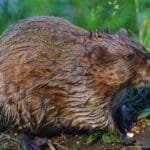This comprehensive guide explores the Cupaniopsis Anacardioides, commonly known as Carrotwood or Tuckeroo. We’ll delve into its characteristics, growth requirements, benefits to wildlife, invasive potential, and management techniques, offering a balanced perspective on this beautiful yet complex tree. We’ll also explore how to pronounce its somewhat daunting scientific name!
Understanding the Carrotwood Tree
The Carrotwood (Cupaniopsis anacardioides) is a fast-growing evergreen tree native to Australia and New Guinea, reaching heights of up to 35 feet. Its nickname, derived from its carrot-like foliage, hints at the vibrant orange inner bark and taproot, a key identifying feature. The tree is admired for its deep green, pinnate leaves and clusters of bright orange fruits, adding a tropical touch to any landscape.
Key Characteristics of Carrotwood
Here’s a closer look at the defining traits of the Cupaniopsis anacardioides:
- Botanical Classification: Belongs to the Sapindaceae family (previously classified as Cupania anacardioides).
- Common Names: Carrotwood, Tuckeroo, Cashew-leaf cupania, Beach tamarind, Green-leaved tamarind.
- Appearance: Features a dense, rounded canopy with paripinnate leaves, each composed of 4-8 ovate leaflets. The bark is smooth and gray when young, becoming fissured and revealing an orange tinge as the tree matures.
- Flowers: Monoecious (both male and female flowers on the same tree), small, white, and arranged in panicles.
- Fruit: Orange-yellow capsules that split open to reveal bright red seeds, which are a favorite of local birds.
Cultivating Carrotwood: A Practical Guide
Carrotwood is surprisingly easy to grow from seed. Simply remove the fleshy outer covering (aril), soak the seeds in water for a few days to promote germination, and sow in well-draining soil. Its adaptability to various soil types and conditions makes it a relatively low-maintenance option. For established trees, watering needs are minimal due to its drought tolerance. However, occasional deep watering during prolonged dry spells can be beneficial. A slow-release balanced fertilizer, applied in early spring can support healthy growth throughout the season. Pruning is mostly for shaping and removing dead or damaged branches.
Carrotwood Propagation: Expanding Your Garden
- Seed Propagation: The easiest method involves collecting fresh seeds, removing the aril, soaking them for a few days, and sowing them in a well-draining mix. Germination typically takes several weeks.
- Cutting Propagation: While possible, this method requires more specific techniques (further research is recommended for detailed instructions).
Carrotwood and Wildlife: A Symbiotic Relationship
While its beauty is undeniable, the tree also plays a vital ecological role. The bright orange fruits attract birds, facilitating seed dispersal. Furthermore, the Carrotwood serves as a host plant for several butterfly species, providing sustenance for their caterpillars.
The Invasive Potential: A Cautious Note
Despite its many benefits, Carrotwood has a known tendency to become invasive in certain regions, notably Florida. Its rapid growth and prolific seed production, aided by bird dispersal, allow it to outcompete native vegetation, potentially disrupting local ecosystems. Ongoing research suggests that the severity of its impact is still being studied.
Managing Carrotwood: Maintaining a Balance
To prevent the spread of Carrotwood, several management techniques are employed:
- Manual Removal: Effective for young trees or initial infestations.
- Herbicide Application: Requires careful selection and application to minimize environmental impact. Consulting with a local expert is advised.
- Biological Control: Scientists are exploring the use of natural enemies (insects, fungi) to control its spread. This is a complex area of ongoing research.
Weighing the Pros and Cons
The Carrotwood offers a mix of advantages and disadvantages:
| Pros | Cons |
|---|---|
| Beautiful foliage and attractive fruit | Potential to become invasive in certain regions |
| Fast-growing and relatively low-maintenance | Can form dense thickets and displace native plants |
| Attracts birds and butterflies | May require ongoing management to prevent spreading |
| Adaptable to various soil conditions | Control methods can be time-consuming and potentially costly |
| Drought-tolerant once established | |
| Easy to propagate from seed | |
| Resistant to most pests and diseases |
Pronouncing Cupaniopsis Anacardioides: Demystifying the Name
The name Cupaniopsis anacardioides is often a source of confusion. The pronunciation is roughly “Koo-pan-ee-op-sis an-a-car-dee-oy-dees.”
The name itself offers clues to the plant’s lineage. Cupaniopsis suggests a relation to the Cupania genus. Anacardioides translates to “resembling cashew,” potentially referring to the fruit’s shape.
Additional Insights and Considerations
- Regional Care Variations: Care requirements may vary based on climate and soil.
- Companion Planting: Researching beneficial companion plants can enhance your garden’s ecosystem. Consider the crepe myrtle for its vibrant blooms and appealing foliage.
- Long-Term Care: Mature Carrotwood trees may require specialized pruning techniques.
- Specific Fertilizer Recommendations: Look for balanced slow-release fertilizers with NPK ratios suitable for flowering trees.
- Troubleshooting: Yellowing leaves can indicate scale insects or root rot. Treat scale with insecticidal soap or neem oil; ensure proper drainage to prevent root rot.
The Bottom Line: A Beautiful but Demanding Tree
Cupaniopsis anacardioides is a visually appealing tree with many desirable traits. However, its invasive potential necessitates careful consideration and responsible management. By understanding its characteristics and taking appropriate measures, you can enjoy its beauty while safeguarding your local environment. It’s a balance between appreciating its aesthetic value and mitigating its potential impact. Have you considered the flightless cormorant as another unique addition to your knowledge base? This remarkable bird demonstrates the incredible adaptability of nature.
- Unlock Elemental 2 Secrets: Actionable Insights Now - April 2, 2025
- Lot’s Wife’s Name: Unveiling the Mystery of Sodom’s Fall - April 2, 2025
- Photocell Sensors: A Complete Guide for Selection and Implementation - April 2, 2025















